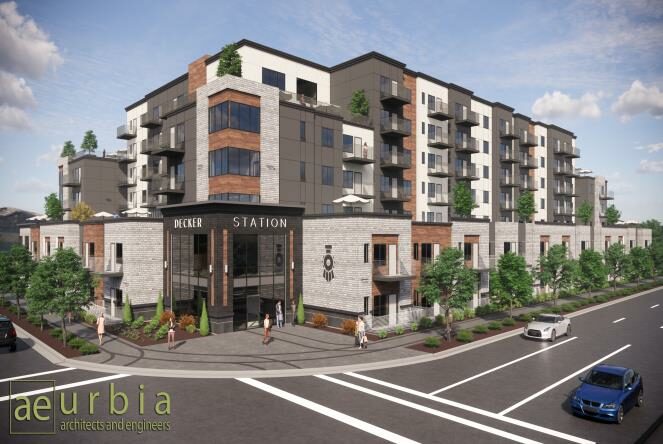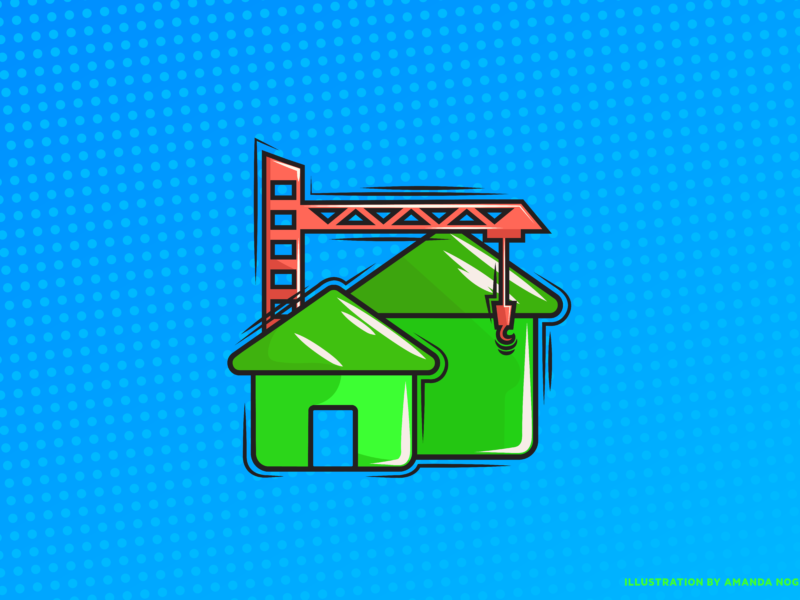Downtown Salt Lake City Full of Opportunity
Salt Lake City—As the State of Utah continues to earn more accolades for its economy and quality of life, a new survey and report show downtown Salt Lake City is an eager and growing part of that success.
The Downtown Alliance and CBRE released the 2017 State of Downtown report Wednesday, an economic benchmark report addressing strengths and concerns for the area—roughly, from just north of North Temple south to 600 South, and from just east of 400 East to I-15.
Quick access to the interstates and the Salt Lake Regional Airport, along with a highly educated workforce, increasing housing access and opportunity, and a revitalization of Salt Lake’s urban heart, including the $100 million renovation of The Gateway and a massive update to the Vivint Smart Home Arena, were listed as Salt Lake’s top strengths by the report. Tempering those are concerns about affordability, liquor laws, building regulations and fees, and a clash of urban and suburban mentalities.
Air quality was also listed as a major threat to Salt Lake’s continued growth and vibrancy, as was the upcoming loss of the Outdoor Retailer trade show to Denver next year. Salt Lake sees 233,000 convention attendees per year; spending at conventions totals $217 million, according to the report. The dense homeless population in the Rio Grande neighborhood was also noted as both a cause of concern and an area of opportunity by the report, as Salt Lake City retools its shelter structure and locations to break up the centralized service in the area.
In addition, the Downtown Alliance and Lighthouse Research released the results of a survey on Wednesday, as well, that examined attitudes and habits of Utahns from Logan to St. George about downtown.
In a statewide telephone survey of 609 residents spanning a range of demographics, the most frequent single reason respondents had for going to downtown within the last six months was for work—an average of 15.5 times. Downtown claims almost 12 million square feet of office space for more than 76,000 employees, according to the State of Downtown.
After commuting to downtown for work, the next-highest reason for visiting was for dining—six times in the last six months—and a handful of times each for shopping, entertainment and religious activities. However, the reasons respondents listed for being interested in going to downtown were dwarfed by dining (72 percent), attending events and festivals (68 percent) and shopping (55 percent), with working coming in at 38 percent.
The breadth and depth of arts and entertainment was popular among respondents, with most saying they liked that the events were unique and located close to other activities in downtown such as shopping and dining. Attending arts and entertainment events was the highest single reason, at 20 percent, for respondents to feel motivated to visit downtown, according to the study.
In terms of shopping, city Creek continued to lead the pack, with 42 percent of respondents saying they had shopped there in the past month. Fashion Place and The Gateway followed with 33 percent and 28 percent, respectively, as well as Trolley Square (20 percent) and Station Park (9 percent). While online retail continues to make brick-and-mortar success increasingly challenging, a greater emphasis on unique offerings and experiences help to make a shopping trip about more than what customers take home.
“I think in general we’re going to see a continuing trend in unique shopping experiences,” said Stephanie Buranek, an associate with CBRE specializing in retail. “I think it’s that experience-driven consumer opportunity that people are really looking for.”
That is particularly true at City Creek, said Linda Wardell, General Manager of City Creek Center. Since the completion of the shopping center, people have factored it more and more heavily into their plans for their entire evenings, she said.
“We like to say people are starting their downtown experience at City Creek Center,” she said, noting that people will often start or end at City Creek in a night that might also include going to the Gallivan Center, the Eccles Theater, downtown restaurants or other draws. “I think after five-and-a-half years, people have really dialed in. They feel comfortable. They know where to park.”
Living in downtown was ranked low among respondents—18 percent—and when asked if they would consider living downtown, 77 percent said no. However, after counting the 2 percent who said they already lived downtown, that leaves 21 percent of respondents who would be interested in living downtown—and that means opportunity, said Jason Mathis, Executive Director of the Downtown Alliance, who moderated the discussion.
“That’s almost a quarter of people who do want to live downtown,” he said, noting that at present, about 10,000 people live within the 501 acres that make up what the study designated to be “downtown.”
While 36 percent of the respondents said they did not want to live downtown because they were happy with where they were, 18 percent said they would have more motivation to live downtown if the cost of living were lower. The State of Downtown report states Salt Lake is among the lowest-priced for Western urban locals–$1,030 as a median for a two-bedroom apartment, higher than only Phoenix’s $1,020, and lower than Las Vegas, Denver, Portland, Seattle, Los Angeles, San Diego, San Jose and San Francisco—and well below the regional average of $1,684. It also noted, however, that the city could improve housing options for people in different earning brackets and increase affordability.
Office space in Salt Lake City is also the second-cheapest in the region—$25.37 per square foot on average, again just above Phoenix ($24.11) but below the rest. Although there is currently a 14.8 percent vacancy rate, Nadia Letey, vice president at CBRE, said it indicates a robust market.
“It’s a healthy vacancy rate. We don’t see a lot of new development coming along this year,” she said. “We’re really seeing, market-wide, tenants taking flight for quality. You’re seeing people leaving [Class] B or [Class] C [office space] and coming to [Class] A.”
However, the lack availability of specialized office space—or the room to build it or the ability to do it quickly—has stymied more than one interested company from moving to Salt Lake, said Lara Fritts, director of Salt Lake City’s Office of Economic Development. Within the last year, three major projects were lost to surrounding cities because the city did not have the right kind of office space available in time for them. Building specialized office space typically takes 18 to 24 months in Salt Lake City, but companies are often looking for facilities in no more than a year—a timeline communities with more free space can usually accommodate better than Salt Lake. Fritts said she sometimes jokes that developers should start building without interested customers, because there will likely be at least one by the time it’s done.
“It goes back to, ‘If you built it, they will come,'” she said.





